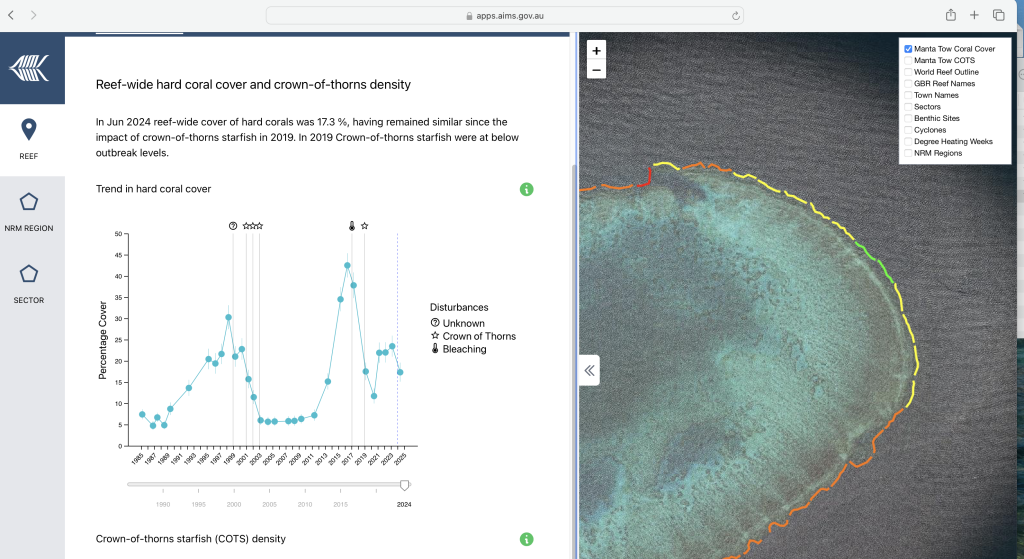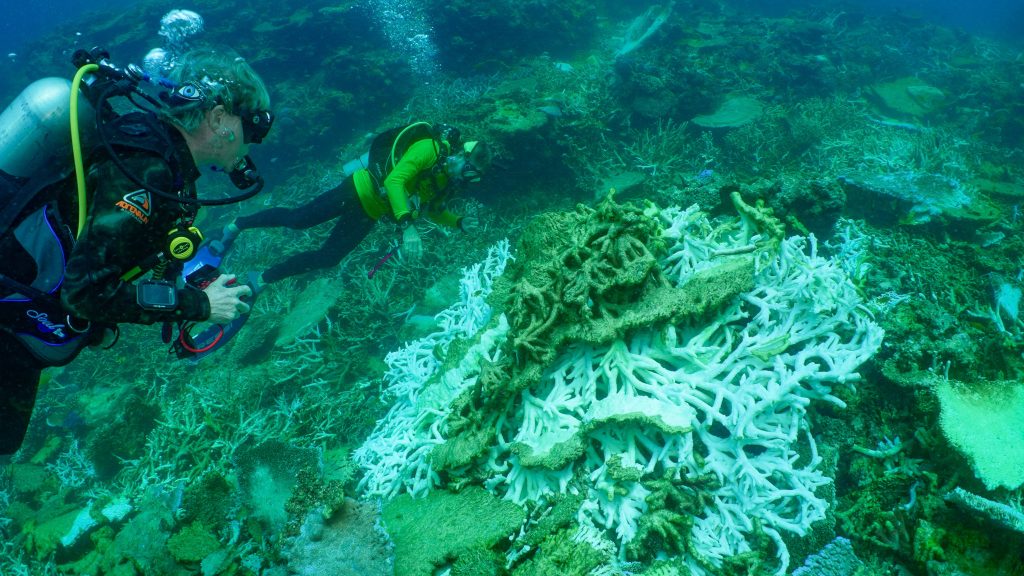Is it possible to ever celebrate regrowth, without first acknowledging injury?
For sure it can happen, coral reefs can bleach, and they can be destroyed by cyclones – and they can regenerate. John Brewer reef as an ecosystem was approaching climax, in all its beauty, when it was smashed – just recently.
How is that a category three cyclone could sit for two hours over the top of one of the most spectacular of all the Great Barrier Reef’s mid-shelf reefs – for two long hours – unleashing such destruction and yet the Australian Institute of Marine Science (AIMS) monitoring program has no record of it?
This event is not recorded as a significant change in hard coral cover, or anything else in their newly released ‘reef-wide hard coral cover’.

Hard coral cover at John Brewer Reef was recorded as just 23 percent before TC Kirrily and that was a complete misrepresentation. Hard coral cover is now officially 17 percent in this latest survey – and so much coral was destroyed in between.
At the reef crest for sure, coral cover went from more than 70 percent to perhaps less than 20 percent in one afternoon.
I watched satellite imagery of the cyclone in real time as it sat directly over John Brewer as a category three on Thursday 25th January 2024.
Then at the first opportunity, I visited – that was three weeks later, on 15th February 2024.
I observed how massive plate corals in shades of pink, green and chocolate brown, once beautifully arranged such that they over-lapped, and over-hung a wide and deep crevasse: these corals had been picked-up, flipped-over and smashed-up by the cyclone. The extent of the destruction was gut wrenching.

And at the reef crest large sections were scoured clean of coral, where previously there had been such a diversity of hard corals including staghorn corals of a brilliant purple – and sea anemones with their bright orange clown fish.
I have received an email just this morning, ‘The AIMS Long-Term Monitoring Program have recently completed the final survey trip of the 2023-24 reporting year … ‘. There is mention of John Brewer reef, I click across, there is comment:
In June 2024 reef-wide cover of hard corals was 17.3 %, having remained similar since the impact of crown-of-thorns starfish in 2019. In 2019 Crown-of-thorns starfish were at below outbreak levels.
I am growing to despise the premeditated ignorance that is everywhere in Western Civilization with opinion leaders and scientists often prostituting accurate reporting of the real state of the natural environment for a political narrative.
Then again, in the case of the AIMS Long-Term Monitoring Program is it simply gross incompetence that dates back to the inception of the program nearly 40 years ago?
Could it be that they simply have no idea how to sample a structurally diverse ecosystem to meaningfully quantify change.

To be continued…
via Jennifer Marohasy
June 23, 2024 at 11:54PM
